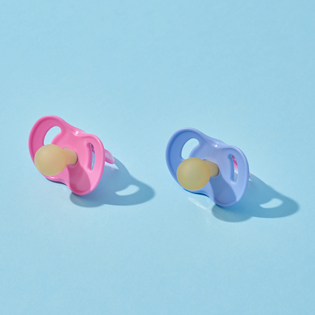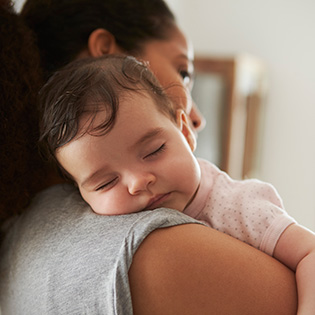If snuggling up next to Fido leaves your little one wheezing, sneezing or rubbing his eyes, he's probably among the estimated 10 to 20 percent of people worldwide who are allergic to cats, dogs or other animals. So what is it about animals that sets your little one sneezing? Surprisingly, it’s typically not their fur.
What causes pet allergies in kids?
The most common culprits of pet allergies are dander (the dead skin cells that pets shed), saliva and urine. Allergies range from mild to severe. A severe pet-dander allergy (like one that can leave a child wheezing or requires shots to control) means you should probably avoid owning a cat or dog, sidestepping the heartbreak of giving it away later.
How to know if your child has a pet allergy
How do you tell if your child’s prone to this type of reaction before you choose a pet for your family? Ask the pediatrician for advice — you might be able to test your child beforehand. Or plan an overnight with friends who have the type of pet you’re considering to get a good dose of dander.
Best cat and dog breeds for kids with allergies
If your child’s allergy symptoms are on the mild side (think closer to hay fever than asthma), there are plenty of breeds that are more hypoallergenic and will keep your sweetie’s sniffles more or less at bay.
The best dogs for kids with allergies are breeds that tend to produce less dander. These include poodles (or poodle mixes, like labradoodles and cockapoos), schnauzers and the Portuguese water dog. Just keep in mind that there’s no such thing as a truly allergy-free breed. Even hairless breeds can cause allergies — again, because dander, saliva and urine are to blame, not the actual fur.
Read This Next
As for cats, any breed can set off allergies, because cat dander is smaller and stickier. Some breeds, such as the rex and the sphynx, are said to be less allergenic, but the evidence on that is anecdotal, not scientific.
Tips to reduce pet allergies in kids
Once you’ve determined your little guy can handle having a pet, and you’ve settled on your dog or cat of choice, try these remedies for keeping his (mild) allergies under control.
- Freshen up frequently. Bathing your pet reduces all those allergens long-haired animals carry. (Your pooch will tolerate a weekly bath. Kitty? Not so much.) Ask your vet to recommend an allergen-reducing shampoo. And don’t forget to also wash your animal’s toys and bedding often.
- Create a pet-free zone. Sure, a shared nap can be one of the joys of having a four-legged friend, but if your toddler’s allergic to pets, banish your furry friends from the bed (and the bedroom). Keeping animals out of your tot’s bedroom and playroom can lower his exposure to dander.
- Clear the air. Keep the house and the air inside it as dander-free as possible: Use a HEPA air purifier, and make sure your vacuum cleaner has a HEPA filter, too — and use it (the vacuum, that is, along with your duster and mop) often.
- Go bare — in your furnishings. Try to remove (or at least minimize) the amount of dander-catching carpeting, drapes and upholstered furniture in your home. Also avoid decorating with animal-hide rugs, since they can be magnets for other pets’ dander.
- Take over doggy (or kitty) duty. Even little kids can help with pet-care responsibilities like brushing out fur, but if your tot is allergic to pets, he should obviously skip these parts of the pet-care process. DIY or outsource those duties, and let your tyke help with feeding or walking his buddy instead.










































 Trending On What to Expect
Trending On What to Expect





